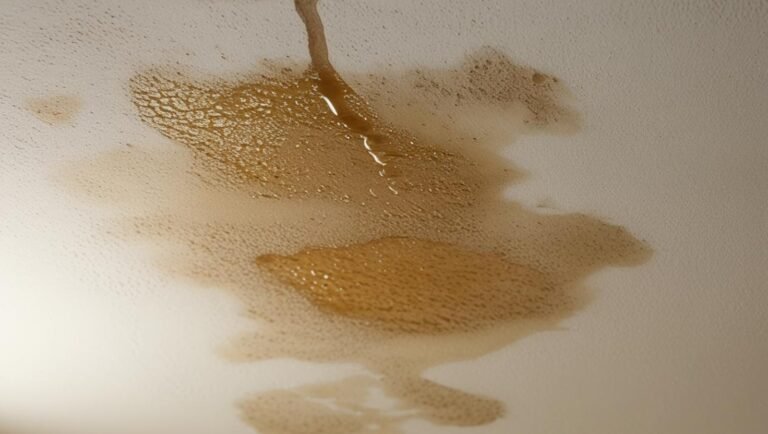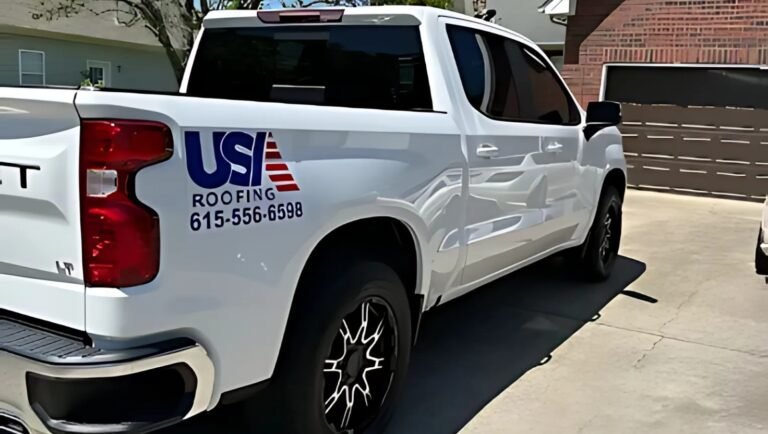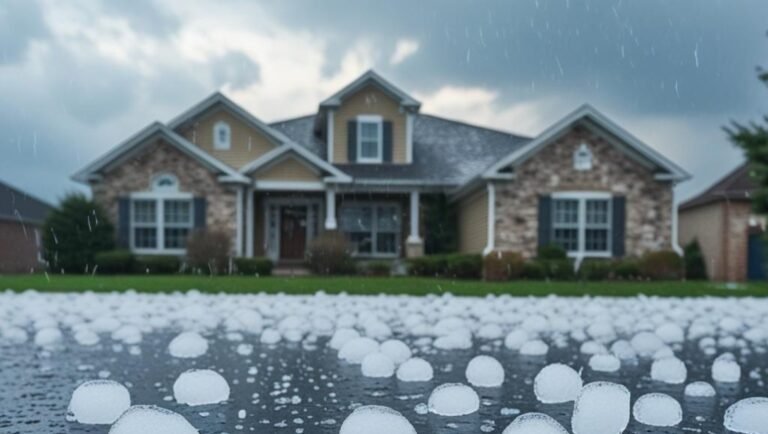A steady rain has just passed, but inside your home, you notice unsightly stains creeping across the ceiling. What seemed like a minor issue has now escalated into costly repairs. Unfortunately, scenarios like this are all too common for homeowners in Murfreesboro, and one of the key culprits? Poor or missing roof flashing.
Roof flashing is an essential but often overlooked element of your roofing system. It serves as your home’s first line of defense against water infiltration, effectively preventing leaks and the many problems that come with them. Today, we’ll discuss what roof flashing is, why it’s so critical, and how it can save you from expensive roof repairs. Along the way, we’ll highlight how USA Roofing’s expertise can help ensure your roof stays secure and your wallet spared.
What is Roof Flashing?
Put simply, roof flashing is the unsung hero of your roofing system. It’s a thin, durable material installed around vulnerable areas of your roof to prevent water from seeping in. Flashing directs water away from seams, joints, and other high-risk areas, like chimneys, vents, skylights, and where the roof meets a wall.
Common Materials Used for Flashing
Roof flashing comes in a variety of materials, each with its strengths:
- Aluminum: Lightweight and rust-resistant, making it a popular choice.
- Galvanized Steel: Durable and cost-effective, though prone to corrosion over time.
- Copper: Long-lasting and stylish but more expensive.
- Rubber or Plastic: Often used in lower-budget installations, but not as durable.
Types of Roof Flashing
Different types of flashing are designed for specific applications, including:
- Base Flashing: Used for chimneys and provides protection where the roof meets a vertical structure.
- Step Flashing: Installed along roof walls, guiding water away from shingles.
- Counter Flashing: Paired with base flashing to provide additional coverage.
- Valley Flashing: Installed in roof valleys to funnel water to the gutters.
Understanding these types is crucial because using the wrong flashing or improper installation can lead to significant damage.
The Importance of Proper Roof Flashing
Roof flashing is more than just an extra layer; it’s critical for protecting the most vulnerable points of your roof. Here’s why it’s essential:
Protecting Vulnerable Areas
Chimneys, vents, skylights, and valleys are natural weak spots where water tends to gather. Without flashing, these areas become entry points for moisture, leading to leaks and damage.
Preventing Costly Consequences
Missing or damaged flashing can result in:
- Leaks and Water Damage: Moisture infiltrates underlying structures, causing warping and rot.
- Mold and Mildew Growth: Persistent leaks create the perfect environment for mold.
- Structural Damage: Water weakens support beams, potentially leading to extensive (and expensive) repairs.
Flashing is a proactive measure that can save homeowners in Murfreesboro thousands of dollars in repairs.
Common Problems with Roof Flashing
Not all flashing issues are created equal, but all can lead to headaches for homeowners. Here are some common problems:
1. Rust and Corrosion
Steel flashing may begin to rust, especially if exposed to constant moisture. Once rust takes hold, the flashing can weaken and fail.
2. Improper Installation
Sadly, not all roofing companies in Murfreesboro have the expertise to install flashing correctly. Sloppily applied flashing can leave gaps, allowing water to seep in.
3. Dislodgement
Heavy storms or high winds can dislodge flashing, exposing vulnerable areas to the elements.
4. Lack of Maintenance
Flashing requires periodic inspection and maintenance. Neglecting this can turn minor issues into major problems.
Visual signs like rust, gaps, or loose flashing are clear indicators that repairs or replacements are needed.
How Roof Flashing Prevents Costly Repairs
Roof flashing might seem small, but its impact is huge. Properly installed flashing provides:
- Watertight Protection: Keeps water out of your home by sealing gaps around chimneys, skylights, and roof valleys.
- Defense Against Structural Damage: Prevents moisture from seeping into wood framing and weakening the structure.
- Mold Prevention: Creates a barrier that stops moisture from incubating mold and mildew.
- Enhanced Longevity: Protects roofing materials, extending the life of your roof.
Take it from USA Roofing’s own case studies in Murfreesboro. Homeowners who invested in quality flashing installation saved themselves from spending thousands on water damage and mold remediation later.
USA Roofing’s Approach to Roof Flashing
When it comes to roof flashing in Murfreesboro, no one does it better than USA Roofing. Here’s what sets us apart:
Our Expertise
We specialize in top-tier flashing installation and repair. Our team brings unmatched experience to every project, ensuring precision and quality in every detail.
Our Process
- Assessment: We start with a detailed roof inspection to identify vulnerable areas.
- Customization: Flashing solutions tailored to your home’s unique needs.
- Installation: Using only the highest quality materials and techniques.
- Follow-Up: Post-installation inspections to guarantee long-term performance.
With USA Roofing, you’re not just getting a quick fix—you’re investing in real peace of mind.
DIY vs. Professional Roof Flashing Installation
While it might be tempting to save a few bucks by installing flashing yourself, here’s what you should know:
DIY Pros
- Lower upfront costs.
- Potential satisfaction for seasoned handymen.
DIY Cons
- Lack of expertise can lead to improper installation.
- Costs can spiral if mistakes require professional corrections.
Why Choose Professionals?
Hiring a reputable roofing company in Murfreesboro like USA Roofing ensures the job is done right the first time. Professional installation saves you time, frustration, and fixes costly errors.
Signs Your Roof Flashing Needs Repair or Replacement
Think your flashing might need attention? Watch for these signs:
- Rusting or Corrosion: Indicates deterioration.
- Missing Pieces: Gaps expose your roof to water damage.
- Loose or Dislodged Flashing: Often caused by weather or aging materials.
- Water Stains or Leaks: A clear signal something’s wrong beneath the surface.
Regular inspections by experts like USA Roofing can catch these issues early, saving you considerable time and money.
The Cost of Ignoring Roof Flashing Issues
Failing to address flashing problems doesn’t just lead to water stains; it can result in:
- Expensive Water Damage: Repairing walls, ceilings, and floors isn’t cheap.
- Mold Removal Costs: Estimates for mold remediation often exceed thousands of dollars.
- Structural Repairs: Weakening beams or supports can send your repair bill skyrocketing.
By comparison, investing in flashing repair or replacement is a small price to protect your home from preventable expenses.
Don’t Ignore Your Roof’s Secret Weapon
Roof flashing might not be the most glamorous part of your home, but it’s absolutely one of the most important. From protecting your home against water infiltration to extending the life of your roof, proper flashing is essential for Murfreesboro homeowners. And when you partner with USA Roofing, you’re not just getting flashing; you’re getting a long-term solution backed by expertise and quality.
If you’re unsure about your roof’s current state, don’t wait for the damage to pile up. Contact USA Roofing today for a roof flashing inspection. A secure and worry-free home is just one call away.
Roof flashing is a thin material, typically made of metal, installed around roof features like chimneys, vents, skylights, and valleys to prevent water from seeping into your home. It acts as a barrier to direct water away from vulnerable areas.
Roof flashing is essential for protecting your home from water damage. It seals gaps and joints on your roof, preventing leaks that could lead to mold, rot, and structural issues.
Common materials include:
- Aluminum: Lightweight and rust-resistant.
- Copper: Durable and aesthetically pleasing but more expensive.
- Steel: Strong and cost-effective, often galvanized to prevent rust.
- Rubber or PVC: Used in some modern applications for flexibility.
Signs of damaged or failing roof flashing include:
- Water stains on ceilings or walls.
- Visible rust, cracks, or warping on the flashing.
- Loose or missing flashing pieces.
- Leaks around chimneys, vents, or skylights.
Minor repairs, like resealing with roofing caulk, can be done by handy homeowners. However, for significant damage or replacement, it’s best to hire a professional like USA Roofing to ensure proper installation and long-term protection.
The lifespan of roof flashing depends on the material and maintenance. For example:
- Aluminum: 20-30 years.
- Copper: 50+ years.
- Steel: 15-20 years (if galvanized).
Regular inspections and maintenance can extend its lifespan.
Costs vary based on the material, extent of damage, and labor. On average:
- Repairs: $150-$500.
- Replacement: $300-$1,000 or more, depending on the complexity of the job.
Yes, properly installed and maintained roof flashing can protect your home from water intrusion during heavy rains and storms, which are common in areas like Murfreesboro.




